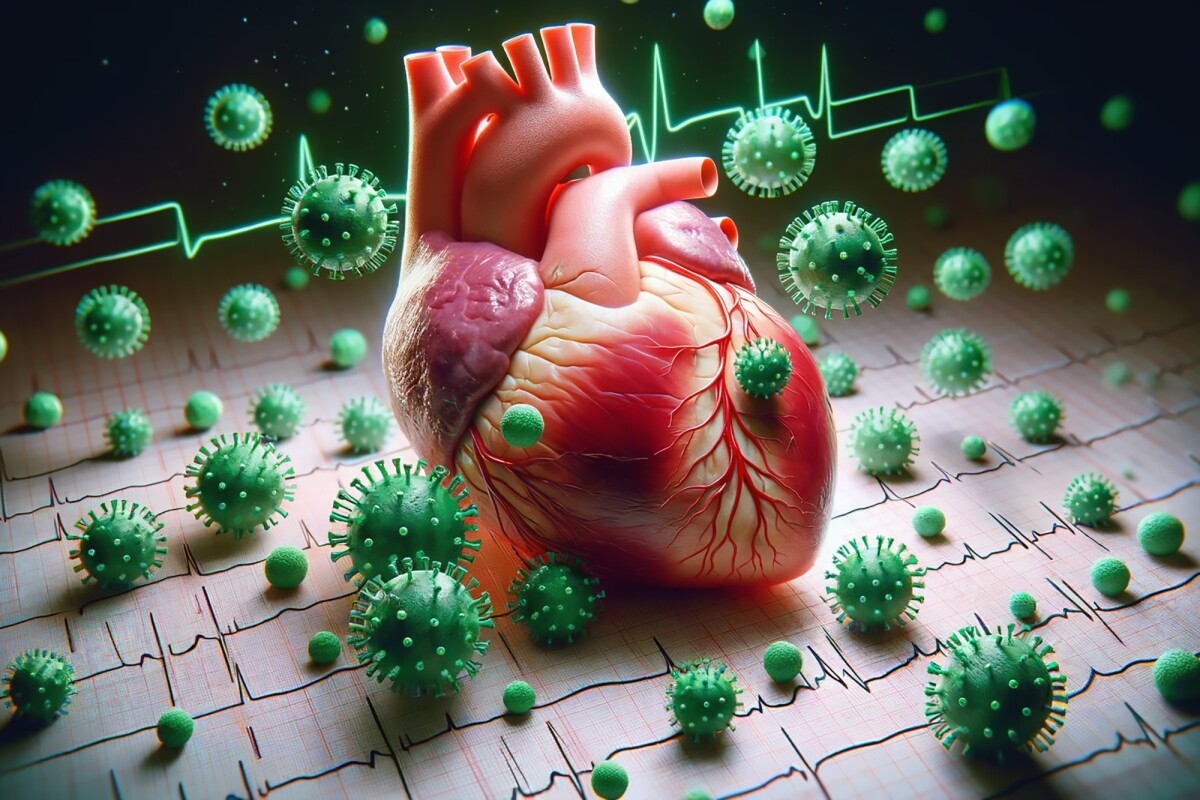
A biological agency is damaging the heart itself and observed inflammation is a late stage. We so needed to know this because detection can be a blod test.
We certainly need to discover those at risk since the jab increased numbers.
vulnerable forlks need to know in order to avoid ramping up the exertion. We may have a vpatway for sudden death events here.
Myocarditis game-changer: We've blamed the wrong culprit
By Paul McClure
Findings from a new study have challenged traditional assumptions about what causes myocarditis
AI-generated by DALL-E
Inflammation resulting from a viral infection has traditionally been thought to cause acute myocarditis, which can lead to fatal heart arrhythmias in otherwise healthy young adults. Now, a new study has shown for the first time that the virus itself damages heart cells before inflammation sets in, challenging traditional assumptions.
Viral infections are the most frequent cause of acute inflammation of the heart muscle or myocarditis, a condition linked to up to 42% of sudden cardiac deaths in young adults. The common cold (adenovirus), hepatitis B and C, and parvovirus have all been associated with myocarditis.
The traditional explanation for what causes myocarditis focuses on inflammation, triggered by the body’s immune response to a virus, which leads to potentially fatal rapid or irregular heart rhythms called arrhythmias. However, a new study led by researchers at the Fralin Biomedical Research Institute at Virginia Tech may have just turned tradition on its head, finding that the virus itself damages heart muscle before the onset of inflammation.
“From a clinical perspective, our understanding of viral infection of the heart has focused on inflammation, causing problems with the rate or rhythm of the heartbeat,” said James Smyth, the study’s corresponding author. “But we have found an acute stage when the virus first infects the heart and before the body’s immune response causes inflammation. So even before the tissue is inflamed, the heart is being set up for arrhythmia.”
Using a mouse model of the adenovirus to replicate the human infection process, the researchers studied the virus’ effects on the heart. They found that early in the infection, the virus disrupted critical components of the heart’s electrical and communication systems: ion channels and gap junctions.
Ion channels act like gates in the cell membranes, helping maintain the correct balance of ions – sodium, potassium, and calcium – needed for the heart to generate normal electrical activity and, therefore, allow it to beat properly. Electrical activation of the heart requires cell-to-cell movement of ions and small molecules via protein channels called gap junctions. Because current transfer only occurs at gap junctions, their disruption can cause the heart muscle to contract randomly or irregularly, compromising its pumping effectiveness.
“Our data demonstrate that acutely infected hearts harbor dangerous electrophysiological alterations at the molecular level and reveal, for the first time, how adenoviral infection can precipitate such pathological subcellular remodeling before cardiomyopathy and development of inflammatory myocarditis,” the researchers concluded.
The next step is identifying biomarkers that indicate an increased risk of arrhythmia in people following a viral infection.
“Individuals who have acute infections can look normal by MRI and echocardiography, but when we delved into the molecular level, we saw that something very dangerous could occur,” said Smyth. “In terms of diagnostics, we can now work with our colleagues here to start looking [for] ways to analyze blood for a biomarker of the more serious problem. People get cardiac infections all the time and they recover. But can we identify what’s different about individuals that are at higher risk to have the arrhythmia? Possibly though a simple blood test in the doctor’s office.”
No comments:
Post a Comment